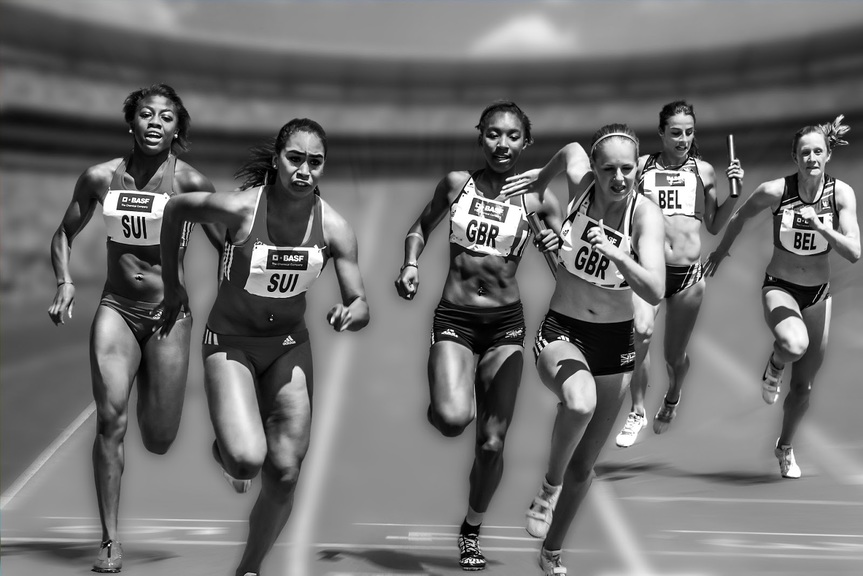Contents
Sports photography is all about capturing the action as quickly and completely as possible. It’s a great learning environment for the new photographer because there’s so little time to fiddle with settings and make adjustments. And it also means that if I’m not attentive and know my camera inside and out, I’ll miss magic moments more often than not. So here are some tips to make sure that doesn’t happen to you.
#1. Anticipating what’s going to happen is key
Anticipating the action is a big part of sports photography. Things can happen so quickly, that when I least expect it, the big play’s been made and everyone’s on the ground. So at the very least, I want to make sure I know the rules of the sport I’m photographing.
![]()
I want to be in place and shooting before the action really starts, not once I realize something’s happening. With a bird’s eye view from the stands or sidelines, I can be sure I’m already in place and shooting.
If I’m working for a client, then shooting along the sidelines shouldn’t be an issue. But as a hobbyist, trying to work out an arrangement with one or both teams to have access to the sidelines. A great way to secure cooperation is to offer full resolution copies of photos taken via email for promotional use. And if I’m lucky, the team may like what they see, and then call me for a paid shoot next time.
#2. High shutter speeds are essential
In sports photography, the majority of photos freeze high-speed action with no blur whatsoever. That means I want to stick to high shutter speeds of 1/1000ths of a second or more. Depending on my aperture and lighting, I may need a higher ISO as well, to ensure my images are properly exposed.

#3. Monopod over tripod
Even with image stabilization and high shutter speeds, sometimes a bit of camera stability really comes in handy. Monopods are the best tool for both wildlife and sports photographers.
Monopods have a significant advantage over a tripod in that they can be adjusted or moved very quickly. I can stop, shoot, move, and then shoot some more. They don’t provide the stability of a tripod, but they do a better job of it than shooting handheld.
Also panning is incredibly easy to do. With a simple twist of my hands, I’ve shifted my entire perspective. With a tripod, it can be an incredibly awkward maneuver, especially if the legs are splayed far enough to catch on nearby obstacles such as the photographer.
![]()
#4. Get to know Burst mode
Burst is also known as “continuous drive” in some digital cameras. This setting lets me hold down the shutter and fire off a burst of images, rather than only taking one photo at a time.
The camera has a memory buffer that will rapidly fill, depending on the camera’s processor speed, the write speed of the memory card, and the image quality. The higher the image quality, the faster the buffer will fill. Once the buffer is full, the camera will need a few seconds to empty the buffer by writing the remaining images to the memory card.
Many cameras like the Olympus OM-D E-M1 Mark II are known for having blazing fast burst rates of up to 60 frames per second (and 16 fps using continuous AF). Most cameras don’t work nearly as fast as this. As long as Burst mode is available, use it so you don’t miss the best moment of a collision or good play when shooting sports.
Conclusion
Shutter speed, monopods, movement, and anticipation. Speed is the main issue in sports photography. Therefore, I need to make sure I already have the right lens, right settings, and right position. Lastly, I need to guess what’s about to happen so I can fire off a burst of photos and choose my favorite later.
It’s not as hard as it sounds. Like all aspects of the artistic world, it just takes practice. So get out there, and start shooting, already!
References:
https://fstoppers.com/originals/11-easy-ways-improve-your-sports-photography-109759